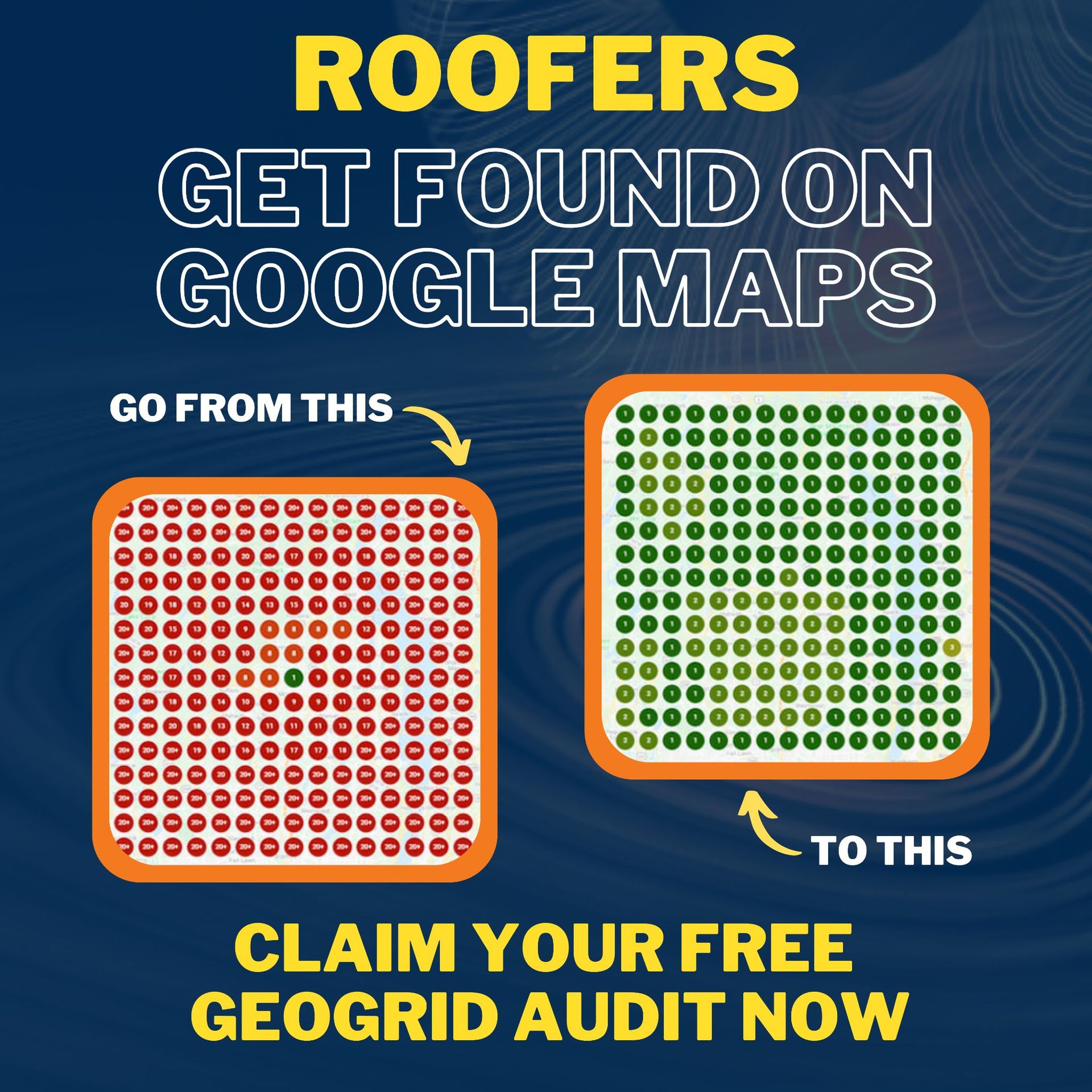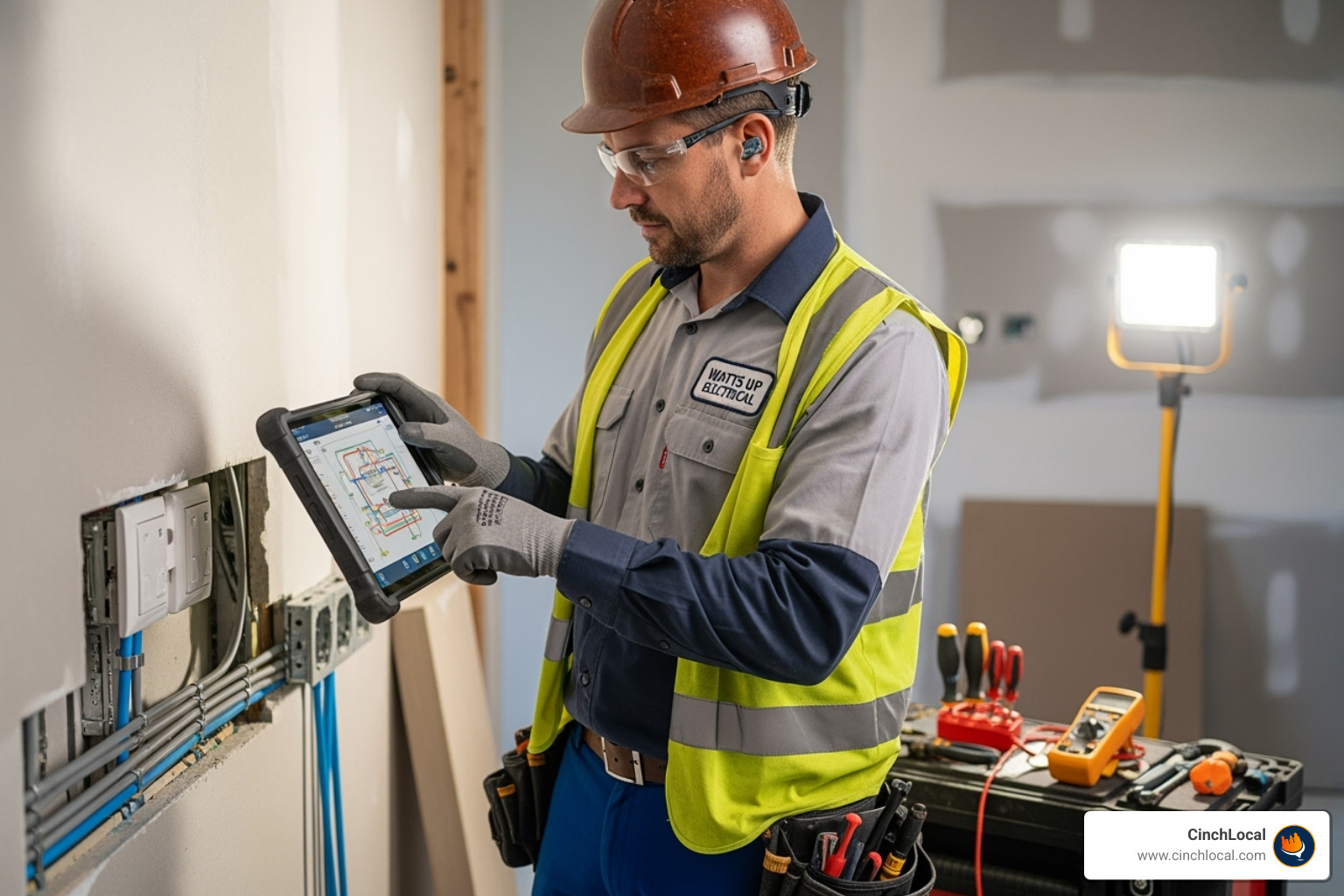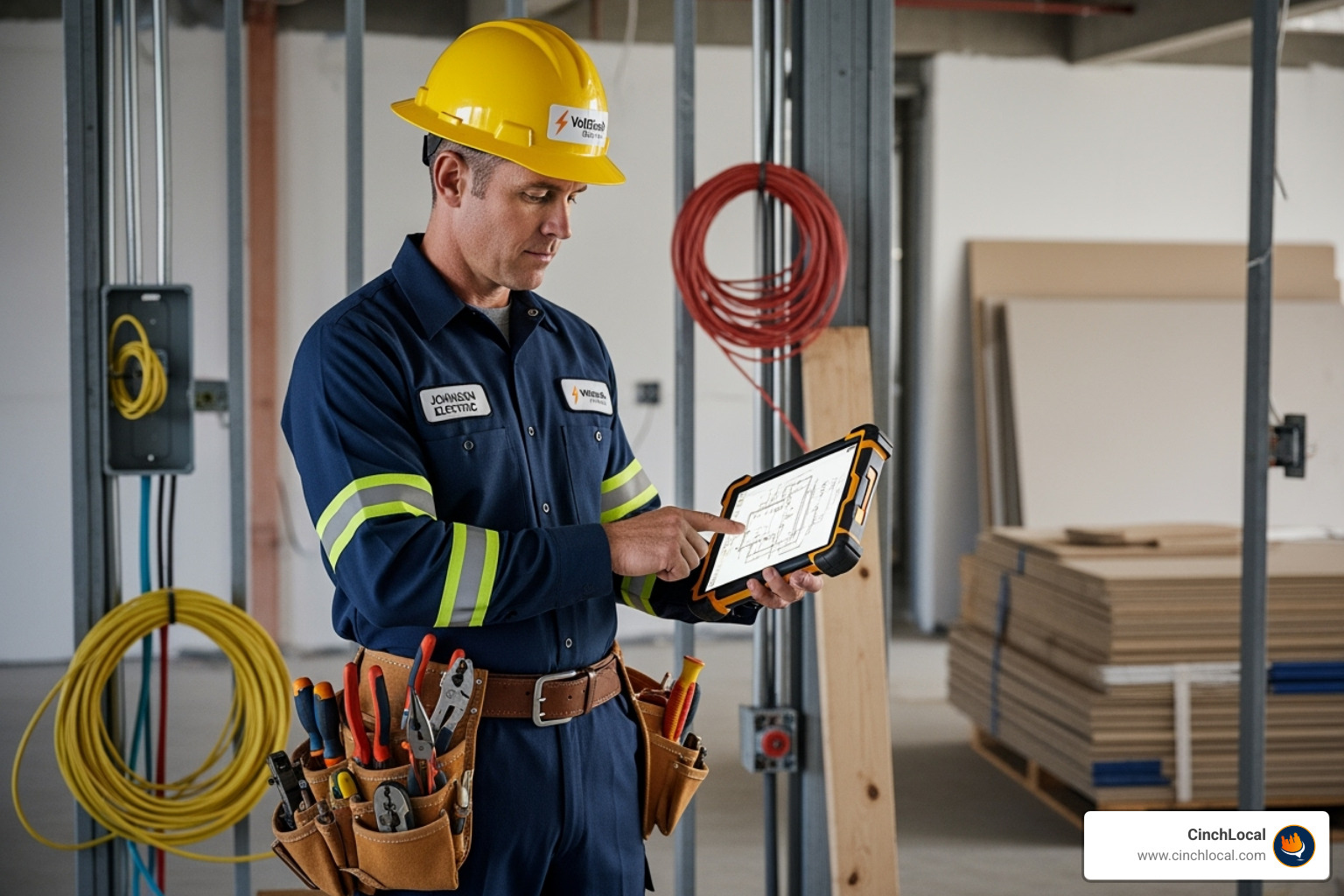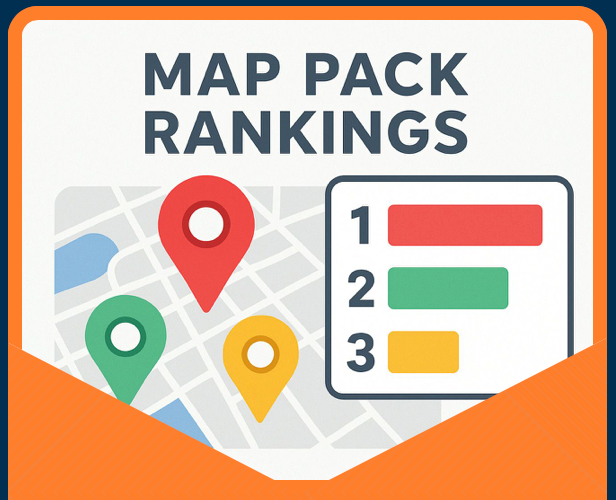
Cary Byrd // Founder of CinchLocal
A Comprehensive Guide to Roofing SEO for Beginners

Why Roofing SEO is Your Gateway to Consistent Leads
Roofing SEO is the process of optimizing your roofing company's website and online presence to rank higher in Google search results when potential customers search for roofing services in your area.
Quick Answer: What is Roofing SEO?
- Definition: Optimizing your roofing website to appear at the top of Google searches
- Goal: Attract homeowners actively searching for roofing services
- Key Components: Local Google Business Profile, keyword-optimized content, website speed, and customer reviews
- Timeline: Typically 3-6 months to see meaningful results
- ROI: SEO generates nearly 9 leads for every 1 lead from traditional marketing
When a homeowner's roof starts leaking during a storm, they don't flip through the Yellow Pages. They grab their phone and search "roof repair near me" or "emergency roofer in [city]."
68% of all Google clicks go to the top three results. If your roofing company isn't ranking on page one, you're essentially invisible to these ready-to-buy customers.
Roofing SEO levels the playing field. You don't need the biggest marketing budget to outrank established competitors. You need the right strategy, consistent execution, and patience to let organic growth compound over time.
I'm Cary Byrd, CEO and founder of CinchLocal, where I've spent over a decade helping roofing contractors dominate their local markets through strategic roofing SEO and digital marketing.
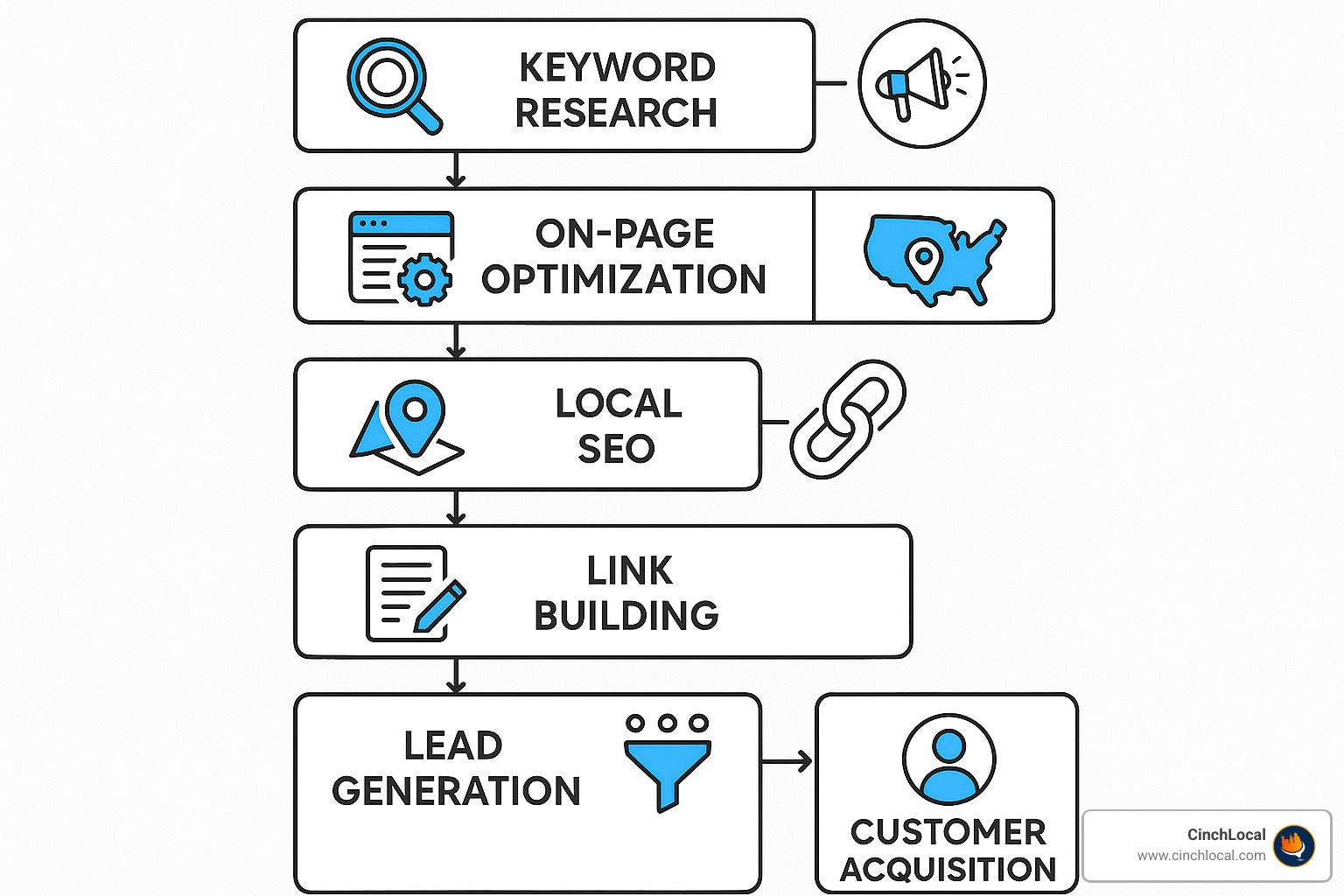
Roofing SEO terms to learn:
Understanding the Foundations of Roofing SEO

Roofing SEO is fundamentally different from general SEO because it's hyper-local and service-based. When someone searches for a roofer, they need immediate attention.
The Anatomy of Search Results
Google search results for roofing services display:
- Paid Ads (top 3-4 results with "Ad" labels)
- Google Maps Local Pack (the 3 local businesses with map pins)
- Organic Results (the traditional blue links below)
The first organic result gets 27.6% click-through rate, while the tenth gets less than 1%. That's a 35x difference in visibility.
Why Roofing SEO Matters in 2024
The roofing industry generates over $12 billion annually in the U.S. Yet 62% of customers ignore businesses without a web presence, and 85% look for local service providers online.
Roofing SEO results typically follow this pattern:
- Month 1-2 : Technical foundation and optimization
- Month 3-4 : Initial ranking improvements
- Month 6+ : Consistent lead flow from primary keywords
Core Ranking Factors for Roofing SEO
Proximity : How close your business is to the searcher's location.
Relevance : How well your content matches search queries.
Authority : Google's assessment of your credibility through reviews, backlinks, and consistent business information.
Page Speed : Sites should load in under 3 seconds on mobile.
E-E-A-T : Experience, Expertise, Authoritativeness, Trustworthiness demonstrated through project photos, credentials, testimonials, and industry recognition.
Roofing SEO Keyword Blueprint
Keywords bridge what homeowners desperately search for during emergencies and your roofing services. Roofing SEO keywords aren't just about traffic—they capture homeowners ready to call.
Understanding Roofing Search Intent
Emergency searches like "roof leak repair near me" convert exceptionally well because they represent immediate need. These searchers aren't comparison shopping—they need help now.
Service-specific searches like "metal roof installation Atlanta" show clear intent. These searchers know what they want and are actively seeking providers.
Informational searches like "how long does a roof last" build trust and authority. These searchers are in research mode today but will be buying later.
Building a Roofing SEO Keyword Map
Start with core services as seed keywords—roof repair, roof replacement, roof installation. Layer on modifiers:
- Service modifiers : "emergency," "commercial," "residential"
- Material modifiers : "metal," "asphalt," "tile"
- Location modifiers : Your city and surrounding areas
Long-tail keywords often outperform broad terms. "Emergency roof leak repair near me" has homeowners ready to buy, while "roof repair" is too general.
Tools like Semrush's Keyword Magic Tool help find these opportunities. Use competitor gap analysis to find keywords your local competitors rank for that you're missing.
Content That Builds Topical Authority
Service pages should be detailed and location-specific. Explain how you work, why it matters, and what makes you different.
City pages need genuine local details—neighborhood information, building codes, weather considerations, and local landmarks.
FAQ content answers real homeowner questions like "How much does roof replacement cost?"
Educational content positions you as the trusted expert through detailed guides about materials, storm damage, and insurance claims.
Video content showcases your work quality through before-and-after walkthroughs and material comparisons.
Five evergreen content ideas: Complete roofing cost guides for your city, storm damage inspection checklists, material comparison guides, contractor selection guides, and warranty explanations.
For detailed content strategies, check our roofing content marketing guide.
On-Page & Technical Optimization Essentials

Technical roofing SEO is your website's foundation. Without it, even beautiful design goes to waste when pages load slowly and potential customers click away.
On-Page SEO Fundamentals
Title tags are like your truck's sign—they tell people exactly what you do and where. Keep them under 60 characters: "Emergency Roof Repair Atlanta | 24/7 Storm Damage Service."
Meta descriptions are your elevator pitch in search results. Use 150-160 characters: "Fast emergency roof repair in Atlanta. Licensed roofers available 24/7 for storm damage, leaks, and urgent repairs. Free estimates."
Header tags organize content logically. Use H1 for main titles, H2 for major sections like "Our Services," and H3 for subsections.
URLs should be descriptive : "yoursite.com/atlanta-roof-repair" instead of "yoursite.com/page1."
Image alt text helps accessibility and SEO: "Roof repair crew installing new shingles on Atlanta home" beats leaving it blank.
Schema markup gives Google structured information about your business hours, service areas, and contact details.
Performance Optimization
Google's Core Web Vitals measure real user experience. Target under 2.5 seconds for main content loading, under 100 milliseconds for click response, and minimal layout shifts. Check your scores at PageSpeed Insights.
Mobile-first is crucial since 60% of roofing searches happen on phones. Google primarily uses your mobile site for rankings.
Site architecture should be logical—homepage links to main services, which link to city pages and related content. Keep important pages within three clicks of your homepage.
Create an XML sitemap and submit it to Google Search Console to help Google find all your pages.
Use HTTPS security , implement caching for faster loading, consider a CDN for global speed, and compress images without losing quality.
Local SEO Domination for Roofers

Local SEO captures customers in your backyard—homeowners actively searching for roofers in your service area. The Google Maps Local Pack (those three businesses with map pins) gets 44% of all clicks for local searches.
Optimizing Your Google Business Profile
Your Google Business Profile is the foundation of local roofing SEO success.
Primary category : Choose "Roofing contractor" as your main focus. Add secondary categories like "General contractor" if relevant.
Business information : Use exact business name, physical street address (never P.O. Box), and local phone number. Consistency across the web is crucial.
Service areas : List up to 20 specific cities or neighborhoods you serve. Be specific—"Marietta, Roswell, Sandy Springs" instead of "Atlanta area."
Services section : List specific services like "Emergency roof repair," "Storm damage restoration," "Metal roof installation," and "Commercial roofing."
Google Posts : Share recent job photos, seasonal tips, and special offers. Posts stay visible for seven days.
Photos : Upload new images weekly—before-and-after projects, team photos, and equipment shots that show professionalism.
NAP Consistency and Citations
NAP (Name, Address, Phone) must be identical across your website, Google Business Profile, Facebook, Yelp, and all directory listings. Even small differences like "St" versus "Street" can confuse Google's algorithm.
Citations —mentions of your business information on other websites—act like votes of confidence. Focus on general directories (Yelp, Facebook), industry platforms (Angie's List, HomeAdvisor), and local directories (Chamber of Commerce).
Review Generation Strategy
90% of people rely on reviews before contacting local businesses. Google uses review quantity, quality, and recency as ranking signals.
Ask for reviews right after completing projects when customer satisfaction is highest. Send a direct link to your Google Business Profile review section 2-3 days after project completion.
Respond to all reviews —thank customers for positive feedback and address concerns professionally in negative reviews.
Our Google Maps local SEO service helps roofing contractors dominate local search through strategic optimization and review systems.
For deeper optimization strategies, see our Google My Business guide.
Authority Building & Backlinks
Backlinks are digital referrals. When another website links to yours, they're telling Google you're trustworthy. One high-quality backlink can be worth more than 100 low-quality ones.
Understanding Link Value
Google evaluates backlinks based on authority (how trustworthy the linking site is), relevance (connection to roofing/home improvement), and context (natural placement within content).
A link from your local news website covering storm response carries serious weight compared to random directory links.
Safe Link-Building Strategies
Local directories : Start with Chamber of Commerce, Better Business Bureau, and contractor associations.
Industry publications : Share expertise in roofing magazines, home improvement blogs, and construction websites.
Guest posting : Write about storm damage prevention for insurance blogs or maintenance tips for local home improvement sites.
Community sponsorships : Local sports teams, charity events, and festivals often include website recognition.
HARO (Help a Reporter Out) : Provide expert quotes for roofing-related news stories.
Customer mentions : Satisfied customers sharing experiences on social media or personal blogs create authentic, valuable links.
White-Hat vs. Black-Hat Practices
White-hat practices include creating valuable resources others want to reference, building genuine local business relationships, and earning media mentions through community involvement.
Black-hat practices like buying links, artificial exchanges, or fake listings can result in severe Google penalties lasting months or years.
Maintain anchor text diversity —mix branded links (company name), exact keywords, partial matches, and generic terms like "learn more."
For backlink analysis, use tools like Semrush's Backlink Gap tool to find opportunities your competitors have that you're missing.
Focus on E-E-A-T (Experience, Expertise, Authoritativeness, Trustworthiness)—every backlink should reinforce your reputation as a skilled, reliable roofing professional.
Tracking ROI & Adjusting Your Roofing SEO Campaign
Roofing SEO without tracking is like working blindfolded. Measuring success doesn't require advanced data science skills.
Essential Tracking Tools
Google Analytics 4 shows how visitors interact with your website. Set up conversion goals for contact forms, phone calls, and quote requests.
Google Search Console reveals which keywords bring visitors, your ranking positions, and technical issues affecting performance.
Call tracking uses unique phone numbers to see which marketing efforts generate calls—crucial for roofers since many customers prefer calling over forms.
Key Performance Indicators
Local search visibility : Focus on traffic from your service area, not nationwide visitors.
Mobile traffic : Over 60% of roofing searches happen on phones—track mobile performance separately.
Lead generation : Track both form submissions and phone calls, then calculate cost per lead from SEO versus other channels.
Revenue attribution : The ultimate metric—monthly revenue from SEO leads minus SEO investment, divided by investment, multiplied by 100 for ROI percentage.
Example: $18,000 monthly revenue from SEO leads, $2,500 SEO investment = ($18,000 - $2,500) ÷ $2,500 × 100 = 620% ROI.
When to Adjust Strategy
Watch for these signals requiring strategy changes:
- Declining organic traffic for two consecutive months
- Dropping keyword rankings for primary service terms
- Conversion rate drops indicating website-visitor mismatch
- New competitors entering your market
- Seasonal changes requiring content adjustments
Make data-driven decisions rather than gut-feeling changes. Your roofing SEO performance tells a story—learn to read it for maximum results.
Frequently Asked Questions about Roofing SEO
How long does roofing SEO take to show results?
Roofing SEO typically takes 3-6 months for meaningful results. Here's the realistic timeline:
Months 1-2 : Foundation building—fixing technical issues, optimizing Google Business Profile, creating findable content. You might see small improvements like faster loading or appearing for a few more local searches.
Months 3-4 : Long-tail keyword rankings begin. You'll start ranking for specific searches like "emergency roof repair after storm damage in [your city]" that convert well.
Month 6+ : Main service keyword rankings and consistent lead generation. Your phone rings more with qualified leads, and you can trace actual revenue to SEO efforts.
Timeline factors include market competition, existing website authority, and consistency of optimization efforts.
What's the difference between local SEO and roofing SEO?
Local SEO is the foundation—helping any local business appear in "near me" searches and local directories.
Roofing SEO goes deeper into industry-specific optimization. While local SEO might help you show up for "contractors near me," roofing SEO ensures you dominate searches like "metal roof installation," "storm damage repair," and "commercial roofing contractors."
Roofing SEO also understands seasonal patterns, creates content around insurance claims and weather damage, and targets the specific terms homeowners use when they need roofing services.
Should I hire an agency or keep roofing SEO in-house?
In-house SEO works if you enjoy technical marketing and can dedicate 10-15 hours weekly to learning and implementing strategies. It makes sense for smaller markets with less competition or tight budgets.
Professional agencies bring specialized tools, experience, and industry knowledge that takes years to develop independently. Costs typically range from $2,500-$5,000 monthly, but many contractors find agencies deliver better ROI through faster results and opportunity cost savings.
Start with basic optimization to understand fundamentals, then consider professional services as your business grows and roofing SEO becomes more critical.
Ready to explore professional help? Learn about CinchLocal's roofing SEO services.
Conclusion
You now have everything needed for roofing SEO success. Every roofing company dominating their local market started exactly where you are.
Roofing SEO generates nearly 9 leads for every 1 lead from traditional marketing. While competitors rely on expensive ads and door-to-door sales, you can capture customers actively searching for your services.
Remember the key points: 68% of clicks go to the top three results, so ranking matters. Start with quick wins—audit your Google Business Profile, check website speed, ensure consistent business information. Then build long-term foundations with valuable content, systematic review generation, and quality backlinks.
The roofing contractors who succeed with roofing SEO understand it's a marathon, not a sprint. They show up consistently, provide real value, and let their work speak for itself online.
At CinchLocal, we've helped hundreds of roofing contractors transform from struggling for visibility to being booked solid with high-quality leads. Our Roofer Footprint Expansion System implements everything in this guide systematically, guaranteeing increased Google Maps visibility and pre-sold leads within 30 days.
Your potential customers are searching for roofing services right now. The question isn't whether they'll find a roofer—it's whether they'll find you or your competitor.
Ready to stop competing on price and start attracting customers actively searching for your services? Learn more about our roofing SEO services and find how we can help you dominate your local market.
The best time to start roofing SEO was six months ago. The second-best time is right now.
Want Us to Uncover Hidden 'Footprint Gaps' And Critical Blind Spots That’s Quietly Draining Calls, Jobs, and Profits?
Simply Fill Out The Form Below:
